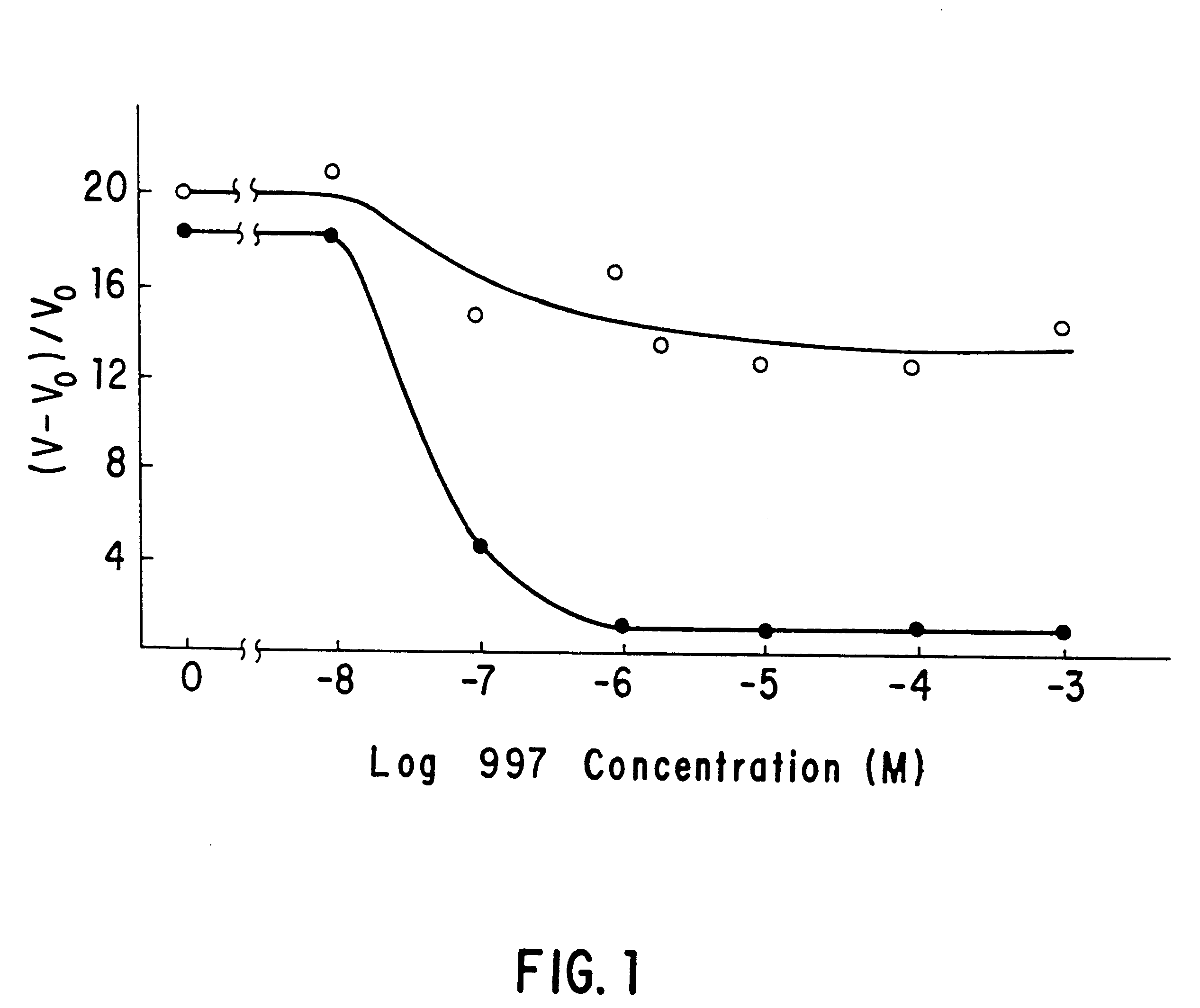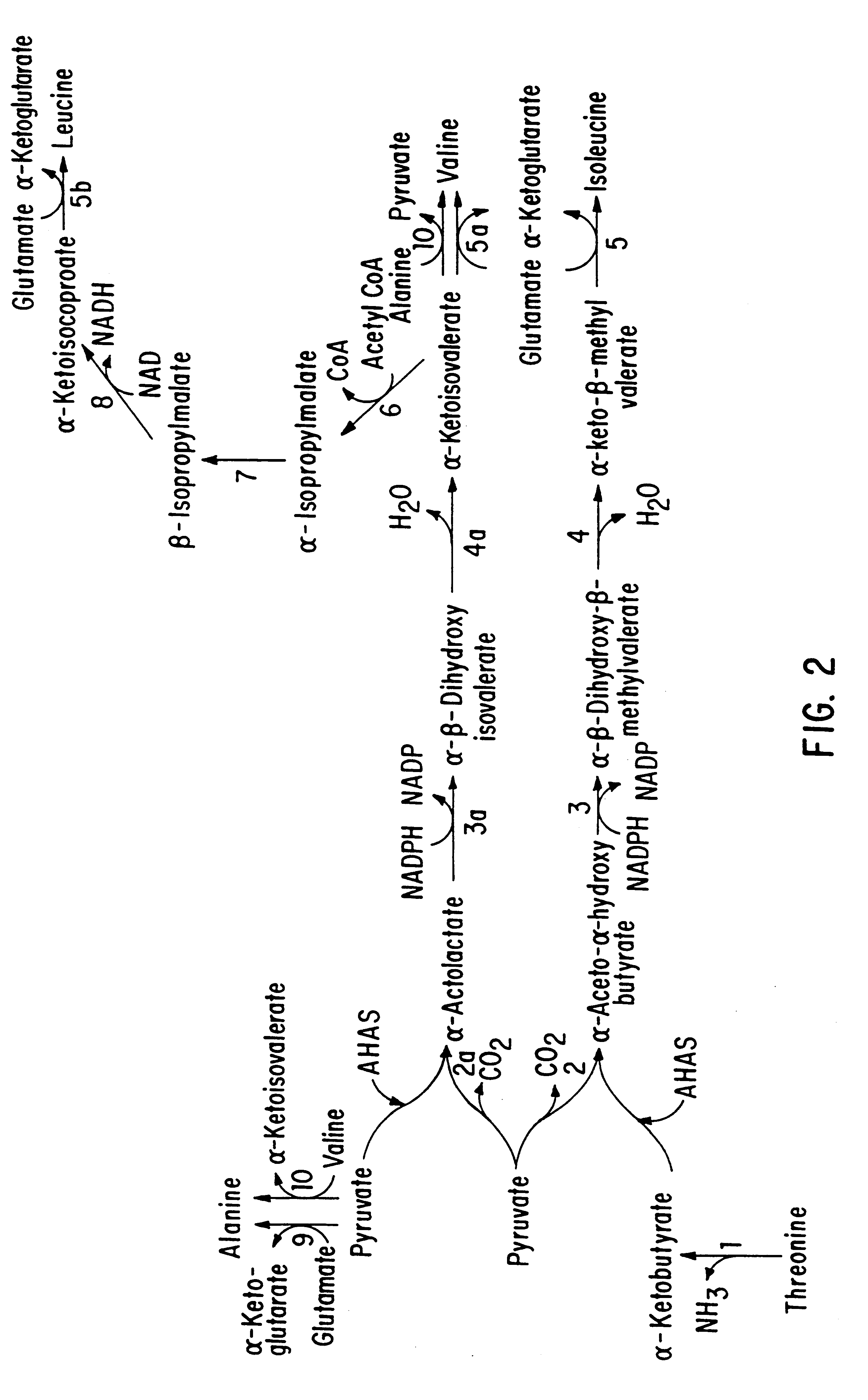Herbicide resistance in plants
a technology of herbicide resistance and plants, applied in the field of genes and enzymes, can solve the problems of weed control remaining a significant and costly problem for farmers, compound phytotoxicity is also greater, and achieves the effect of confering resistance and effectively combating weed problems in maize production
- Summary
- Abstract
- Description
- Claims
- Application Information
AI Technical Summary
Benefits of technology
Problems solved by technology
Method used
Image
Examples
Embodiment Construction
This embodiment of the invention relates to plants, plant tissues, and plant seeds which contain an enzyme which is resistant to inhibition by imidazolinone and / or sulfonamide herbicides. The enzyme is an altered acetohydroxyacid synthase which confers resistance to the above-mentioned herbicides in plants, plant tissues and seeds. Methods and compositions are provided for producing plants, plant tissues and seeds containing a gene coding for an altered AHAS. Also described are cell culture selection techniques to select for novel maize genotypes resistant to certain imidazolinone and / or sulfonamide herbicides. The production of these maize lines encompasses isolation, characterization, and development of these maize lines and regeneration of plants from these cultures which are resistant to the herbicides.
The method of this invention may be divided into the following areas for the purposes of description: (1) determination of the primary site of action of the imidazolinone family o...
PUM
| Property | Measurement | Unit |
|---|---|---|
| volumes | aaaaa | aaaaa |
| volumes | aaaaa | aaaaa |
| weight | aaaaa | aaaaa |
Abstract
Description
Claims
Application Information
 Login to View More
Login to View More - R&D
- Intellectual Property
- Life Sciences
- Materials
- Tech Scout
- Unparalleled Data Quality
- Higher Quality Content
- 60% Fewer Hallucinations
Browse by: Latest US Patents, China's latest patents, Technical Efficacy Thesaurus, Application Domain, Technology Topic, Popular Technical Reports.
© 2025 PatSnap. All rights reserved.Legal|Privacy policy|Modern Slavery Act Transparency Statement|Sitemap|About US| Contact US: help@patsnap.com



